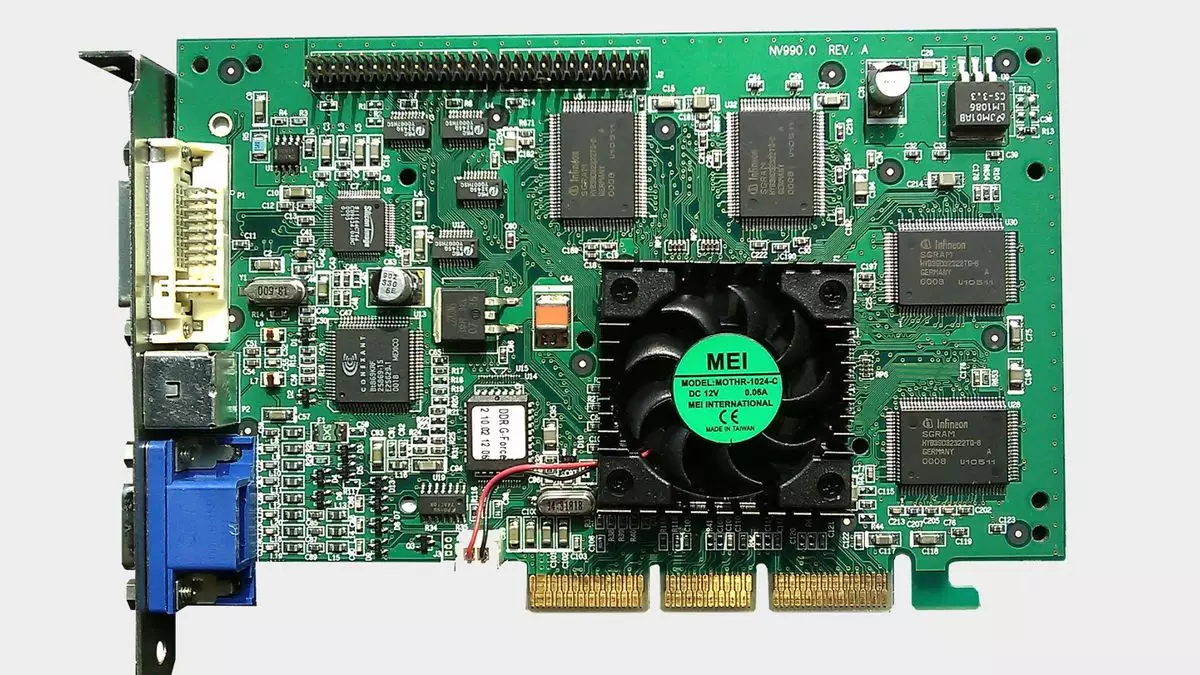On October 11, 1999, the world witnessed the birth of an innovation that would set the stage for the future of gaming: Nvidia’s GeForce 256. While the term “graphics processing unit” (GPU) may have been used by other entities, such as Sony with the PlayStation 1, Nvidia popularized it with the release of the GeForce 256, thereby laying claim to a vital part of gaming lore. This revolutionary card, with its modest specifications based on today’s standards, deserves to be celebrated as a milestone in the evolution of computer graphics.
The GeForce 256 was marketed as the first true GPU, capable of handling complex graphical operations that were previously the responsibility of the CPU. With only 32 MB of memory and a core clock speed of 120 MHz, this graphics card might seem quaint today. However, its innovations, such as onboard hardware transform and lighting (T&L), reinvented the landscape of PC gaming by allowing developers to create far more intricate and visually stunning game environments. This demarcation in the history of gaming technology signifies the fruitful start of the GPU era.
The “256” in GeForce 256 is a nod to its QuadPipe Rendering Engine that could handle operations at 256 bits. Alongside its four 64-bit pixel pipelines, the NV10 chip led to an astonishing fill rate of 480 Mpix/sec, which positioned the GeForce 256 as a formidable option against competitors like the 3dfx Voodoo3 and Nvidia’s own RIVA TNT2 Ultra. During its time, hardware T&L gave the GeForce an edge, making it as much as 50% faster than preceding graphics hardware in certain gaming scenarios.
In addition to performance enhancements, the GeForce 256 introduced valuable features like TV-out capability, hardware alpha blending, and support for 1080i resolution, which made it a versatile card for both gaming and multimedia applications. The buzz around the card soon led to the development of its successor, the DDR version, which was released on December 13, 1999, enhancing performance further with double data rate memory.
1999 marked an exhilarating time for gamers, with iconic titles such as Unreal Tournament and Quake III Arena releasing shortly after the GeForce 256 hit the market. These games leveraged the new capabilities of the graphics card, enabling players to experience fast-paced multiplayer action in stunning detail. The synergy between the technology of the GeForce 256 and the game titles of the time truly illustrated a pioneering spirit, embracing the potential of the hardware and software working in tandem.
As technology progressed, the relevance of the GeForce 256 would eventually decline, but its legacy continued to influence later generations of graphics cards. The introduction of dedicated graphics processing underscored the importance of highly specialized components in modern computing and gaming.
Fast forward to today, and it is astonishing to witness how far GPU technology has come in just 25 years. The original GeForce 256 boasted a transistor count of 17 million, which seemed impressive at the time. In stark contrast, contemporary graphics cards like the Nvidia RTX 4090 have exceeded 76 billion transistors. It’s a testament to both technological advancements and increasing consumer demand for capable hardware that drives the gaming industry forward.
Not only has performance soared, but the appetite for realism in gaming has shifted expectations dramatically. Gamers today demand lifelike graphics, advanced physics, and immersive environments that were once just part of science fiction. The growth pipeline from the GeForce 256 to today’s hardware represents 25 years of relentless innovation and creativity in technology.
As we commemorate the GeForce 256’s silver anniversary, it serves as a reminder of a time when the possibilities were beginning to unfold. Many enthusiasts fondly recall the thrill of unboxing this card, installing it, and experiencing the next level of gaming performance. For those who have retained old hardware, it might be worthwhile to dust off those relics of the past and pay homage to the innovations that paved the way for what we have now.
Indeed, celebrating the GeForce 256 prompts us to question how far we’ve come, while also instilling gratitude for the developments that have changed gaming. So let’s take a moment to appreciate this pioneering piece of technology that forged new ground and ignited our imagination. The GeForce 256 wasn’t just a product; it was the catalyst for a revolution in how we understand graphics and gaming.

